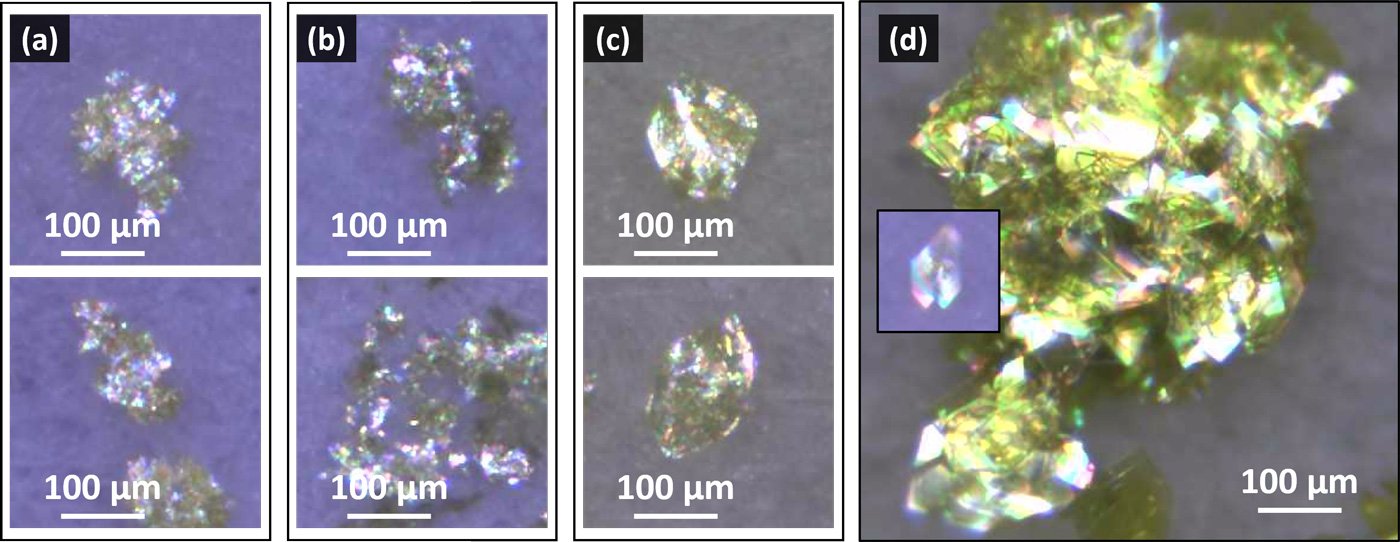One thing that will never go out of style is the class and elegance of a pearl. To attempt to recreate the rare beauty of the pearl, a low-cost alternative is needed to keep up with the demand of consumers
Thanks to their special iridescence and unmatched beauty, pearls have been highly sought after throughout history. Due to their rarity and demand, the development of pearlescent pigments to mimic the natural beauty of a true pearl became inevitable. Here, researchers utilize plate-like particles to create substrate-free pearlescent pigments, a low-cost and straightforward solution to the issue of substrate-based pigments which can be complex and expensive.
Researchers published their results in the Journal of Alloys and Compounds in November 2024.
Traditional mica-based pearlescent pigments are expensive and require specialized equipment to be synthesized, as well as the involvement of complicated chemical reactions which can be difficult to control. Pearlescent pigments are used in a variety of applications including cosmetics, automotive paints, decor and more. Their popularity and demand call for a simpler, more straightforward process to take over the traditional method of using a substrate-based method using mica to achieve the appearance of a pearlescent or satin finish.

“Since ancient times, natural pearls have been treasured for their rich color and gorgeous luster. Their unique optical characteristics arise from a layered structure of alternating calcium carbonate (CaCO3) and protein layers,” said Shu Yin, author and researcher of the study.
Attempting to match the unique characteristics of a pearl is no simple task, yet researchers found a way to streamline the substrate-free process to make the entire process more accessible and cheaper.
To achieve a low-cost and simple solution to the expensive and complicated method used currently, the research team found that the layered crystal structure of vanadium phosphates (VOPs) had major success in producing rich pigments that are stable in organic solvents, making them excellent candidates for products like paint, cosmetics or even glass-alternative plastics. This process is also environmentally friendly, with operating temps around 120℃. The resulting product is a substrate-free process utilizing a single-crystal layered vanadium phosphate with large particle sizes to achieve the ultimate pearlescent pigment: glossy, iridescent and with high aspect ratios.

Some additives are necessary to achieve the desired effect in the pigment, such as hydrogen peroxide to VOP to create larger particle sizes. The addition of this hydrogen peroxide yielded the single-crystal plate-like particles necessary for the desired effect of the pigments. A larger platelet size achieves a more pearl finish, while smaller platelet sizes create a more satin-like finish. Researchers found that this process gave a fair amount of control in the synthesis of the pigments, further reducing wasted time, energy and materials when it comes to the final product.
There are still some ways to improve this process, such as advanced color tuning to expand the color range and improve the stability of the pigments. Additionally, the ability of these pigments to work well in a mixable solution indicates a pigment that is well-suited for colorization.
There is also the hope that some kinks can get worked out, such as improving the surface smoothness to give a more true-to-nature effect to the pigments when applied. Eventually, researchers hope to replace mica-based pearlescent pigments to expand the application of this substrate-free process.

- Publication Details:
Title: Synthesis of novel colored substrate-free pearlescent pigments of vanadium phosphates with large-size layered platelet morphology
Authors: Qiuyu Cheng, Yibei Xue, Takuya Hasegawa, Ayahisa Okawa, Kizuku Kushimoto, Junya Kano, Tohru Sekino, Shu Yin
Journal: Journal of Alloys and Compounds








